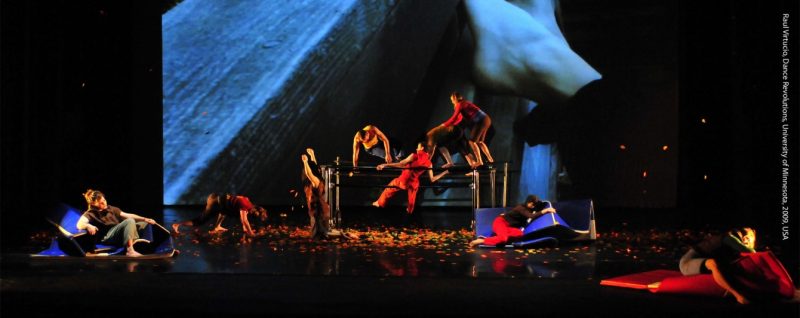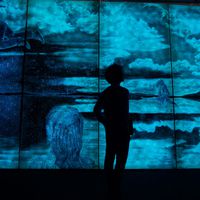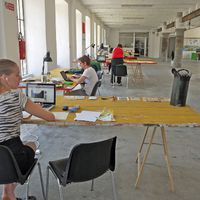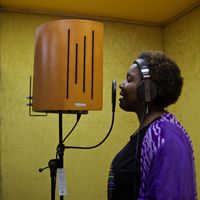Redesigning Mobility Programmes | UNESCO-Aschberg connecting between artists and cities


The field of artistic and cultural mobility encompasses an increasing number of agents, practitioners and stakeholders. Among the many initiatives that have emerged throughout the world over the past two decades, an analysis of the UNESCO-Aschberg programme is of particular interest.

UNESCO’s attention towards the issue of mobility – especially in the framework of cultural diversity and international cultural cooperation and exchange – has always been strong, but it is today in clear need of re-examination, analysis and development.
As specified in the document 197 EX/11, composed by the United Nations organization and focused on the programme’s redesign:
The UNESCO-Aschberg Bursaries for Artists programme was established in 1994 to promote the training of artists by awarding scholarships for the travel and studies of artists-in-residence. These artists’ residencies were funded with the interest generated on the sale of a property in Essonne donated to UNESCO in 1956 by Mr and Mrs Aschberg, Swedish patrons.
From 1994 hundreds of young artists (the programme was initially opened for artists between 25 and 35 years old) benefited from the programme, having the opportunity to travel and enhance their careers, develop skills and train within different specialised institutions.
The different editions of the programme were drawn up in partnerships with several art and cultural institutions worldwide. Participants of the programme included: Centro do Teatro do Oprimido (Brazil), Banff Center for the Arts (Canada), Universidad de los Andes (Colombia), Ensemble Djolem (Côte d’Ivoire), CYPRES (France), IRCAM (France), Centre national de danse contemporaine (France), Sanskriti Kendra (India), Vijnana Kala Vedi Cultural Centre (India), Chang Mu Arts Centre (Korea), Princess Grace Academy of Classical Dance (Monaco), European Ceramics Work Centre (Netherlands), Rijksakademie van beeldende kunsten (Netherlands), Jan van Eyck Akademie (Netherlands), National College of Art (Pakistan), Cooperativa des Actividades Artisticas Arvore (Portugal), Centre d’arts vivants (Tunisia), Edinburgh College of Arts (United Kingdom), Arts International (United States), Bundanon Trust (Australia), Sacatar Foundation (Brazil), Camac (France), Civitella Ranieri Center (Italy), Changdong National Art Studio (Republic of Korea), UNIDEE - Cittadellarte (Italy), Cemeti Art Foundation (Indonesia), Faculty of Fine Arts. Chiang May University (Thailand).
In 2014, and with previous interruptions, the programme was suspended, entering a restructuring and redesign phase aimed at understanding the needs and conditions for its best development. In November 2015, at its 197th session, UNESCO’s Executive Board approved the proposal to redesign the programme, so as to boost its impact, specifying that:
“it will be based on promoting mobility and preferential treatment for artists and cultural professionals from the global South, and supporting creativity and cultural development in the cities of the South through support for exchanges between artists of creative cities, particularly via the Creative Cities Network”.
The forthcoming renewed programme, focused on international mobility, gives rise to a series of questions and reflections.
According to the essay Minding the Gaps: Promoting Mobility, by Mike van Graan and Sophia Sanan (published in the UNESCO Global Monitoring Report 2015: Re | Shaping Cultural Policies), there are several unresolved issues we need to face in the framework of cultural and artistic mobility at a global level. Geographic, social and economic disparities; the presence of numerous obstacles, especially when it comes to visa issues; the open question of sustainability; and the need for a fairer and more reciprocal way of functioning in regards to exchange and mobility programmes, are some of the current questions being discussed in the field. A few of the key messages reported in the essay highlight that:
- Access to international markets for artists and cultural professionals is also crucial for the promotion of sustainable cultural and creative industries and their potential contribution to human, social and economic development, particularly in the global South.
- There is a vast gap between the principles and ideals of the 2005 Convention and the world realities concerning the mobility of artists and cultural professionals from the global South. Indeed, implementation of the Convention so far does not yet appear to have contributed to increasing such mobility.
- The obstacles to the mobility of artists and cultural professionals include increasing security, economic and political constraints, particularly in the global North; hence the Convention needs to be used more effectively in countering these constraints in a spirit of international solidarity.
The UNESCO-Aschberg programme should therefore provide an opportunity to increase mobility as well as a platform for discussing its obstacles, effects and impacts on different levels. Taking into account social, educational and economic outcomes; considering the individual needs of artists and cultural professionals as well as those of collectives and hosting communities; stressing the value of the experience and long-term impact and significance of exchanges, collaborations and establishment of networks, are other issues that merit consideration.
The renewed mobility programme should also consider the multiple existing models in the field, being inclusive and transversal by engaging with different trans-sectorial stakeholders at the institutional level, but also collaborating with private partners and small alternative realities.
Among the multiple possible directions that a mobility scheme could take, the first traces of the new programme emphasize its connection to the Creative Cities Network. Some of the key points of the 197 EX/11 document report that:
- Cultural and creative activities are omnipresent in creative cities. The Creative Cities Network is a valuable reservoir of ideas for the redefinition of urban spaces. Artists play a leading role in these places, which are laboratories of creativity and innovation. They reinvest the space, propose solutions to address current challenges in the fields of transport, the environment and urbanism. Creative cities invest in activities strengthening social cohesion, promoting greater participation of the inhabitants alongside artists in order to rethink cities.
- So as to give artists better socio-economic conditions and promote their mobility, as well as to honour the memory of Mr and Mrs Aschberg, the Director-General proposes using the funds to develop a North-South and South-South cooperation programme to support artists, the mobility of artists and cultural professionals of the South. The programme would be aimed at strengthening capacities through the development of training modules relating to Article 16 of the 2005 Convention and supporting creativity and cultural development in the cities of the South through support for exchanges between artists of creative cities, particularly via the Creative Cities Network. The programme would be funded by the unused balance of the Special Account UNESCO-Aschberg Bursaries for Artists created by the sale of the property constituting the Aschberg donation, in the amount of US $3.6 million, which includes the proceeds from the sale of the Château du Bois du Rocher ($2.97 million). Two thirds of the available funds would be allocated to the 2005 Convention to strengthen its action in favour of the mobility of artists and one third would be allocated to the Creative Cities Network.
While it is clearly important to connect the mobility of artists to the greater sphere of cities and society, it is also important to focus on their personal experiences without transforming them into tools for the development of creative economies. Exchange between people, transmission of knowledge, visions and competences, the flourishing of new ideas and projects and the circulation of different experiences – with a reflection on needs and obstacles – should also be placed at the centre of the programme.
It is essential to note that any step or effort made by UNESCO in the field of mobility should also be an opportunity for artists and cultural professionals to reflect on skills, needs and processes related to this specific context. It is thus worth focusing on UNESCO’s role as a content developer, beyond its function as a funder and grant provider.
Could redesigning the UNESCO-Aschberg programme be a way to analyse and redefine the narrative and challenges of mobility, adding new meaning and awareness? How can the programme connect and exchange with existing mechanisms to promote coalitions for mobility?
The information available is still too summary, but the will to reframe this programme provides a real opportunity to delve into the current needs and questions of the international cultural mobility sector from new and fresh perspectives.
We need UNESCO to take part in the discussion concerning mobility through its contribution of knowledge, vision, competence and network.
Herman Bashiron Mendolicchio holds a European PhD in “Art History, Theory and Criticism” from the University of Barcelona. His current lines of investigation involve the subjects of intercultural processes, globalization and mobility in contemporary art and cultural policies, the interactions between artistic, educational, media and cultural practices in the Mediterranean and the cultural cooperation between Asia and Europe. He has participated in several international conferences and developed projects and research residencies in Europe, Asia and the Middle East. As an art critic and independent curator he writes extensively for several international magazines. He is special correspondent for ASEF culture360.
Similar content
posted on
21 Feb 2016
deadline
03 Dec 2021
deadline
31 Oct 2013
deadline
15 Nov 2010
from - to
28 Jul 2020 - 28 Jul 2020
posted on
07 Aug 2018






